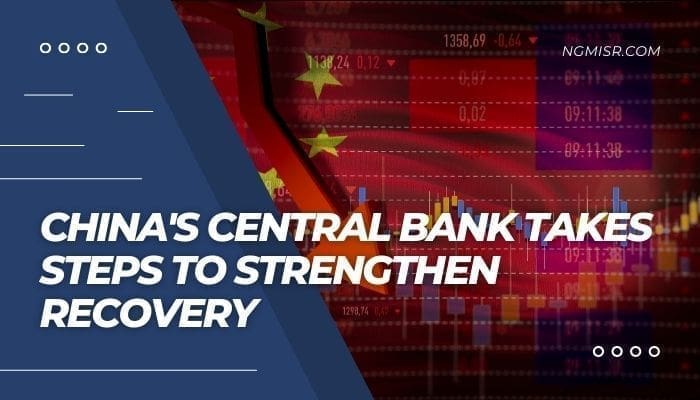China’s central bank unexpectedly lowered a key lending rate, a sign of policymakers’ growing unease over a faltering recovery that likely portends additional measures to steer China’s economy back on course.

Economists, however, believe that reduced borrowing costs may not do much to aid China’s sluggish recovery, as households and businesses have shown little appetite for borrowing in the face of already high debt levels and muted growth prospects.
People’s Bank of China’s transition to a looser policy contrasts with the U.S. Federal Reserve and most other major central banks, which continue to raise interest rates to combat stubbornly high inflation.
Tuesday, the PBOC announced a reduction in the interest rate on seven-day reverse repurchase operations from 2.0% to 1.9%, marking the first reduction in short-term lending rates since August. In addition, the central bank announced that it had injected 2 billion yuan, or roughly $280 million, into the banking system at the new, reduced rate.
Repo and reverse repo transactions are essential instruments used by central banks, such as the Federal Reserve, to manage banks’ funding requirements and influence interest rates on loans to households and businesses.
As the PBOC typically adjusts all of its policy instruments in tandem, the action implies that other key interest rates will likely decrease in the near future, perhaps within days. Economists predict that the PBOC may reduce the interest rate on its medium-term lending facility, which provides loans to banks, when it announces its monthly decision on this facility on Thursday. The rates that banks charge consumers with excellent credit for mortgages and other loans could be reduced after a decision is made on them next Tuesday.
Some of China’s largest commercial banks lowered their deposit rates last week, providing them with more capacity to reduce interest rates on new loans without compromising profits.
Economists assert that Tuesday’s rate cut demonstrates that government and central bank officials are growing increasingly concerned that China’s economic recovery may falter.
“Policymakers have shifted from a wait-and-see approach to proactive easing,” Citi economists wrote in a note to clients on Tuesday.
China’s economy rebounded firmly in the first quarter following the abandonment of draconian Covid-19 controls at the beginning of the year. Since then, however, the recovery has lost momentum, with factories and exports under pressure from a gloomy global backdrop and consumers unwilling to increase spending to fill the void.
Last week’s inflation data indicated that China is at risk of experiencing a period of declining prices, or deflation, an indication of weak spending. On Thursday, a slew of data on retail sales, investment, and industrial production are anticipated to reveal that the economic downturn continued into May.
Governor Yi Gang of the People’s Bank of China (PBOC) indicated in remarks released last week that the central bank intended to increase its support for the economy, though he expressed confidence that the government’s 5% growth objective for this year would be met.
According to economists, it is unclear whether lowering financing costs will significantly contribute to rekindling China’s recovery. Due to sluggish income growth during the pandemic, households are cautious about spending and taking out new loans. Consumer confidence is fragile, and private sector investment in the first quarter scarcely increased.
“This is a blunt policy instrument,” said Louise Loo, chief China economist at Singapore’s Oxford Economics. She stated that if there is a low demand for loans, making loans affordable will not be of much assistance.
Economists assert that officials may need to employ more targeted policy instruments to reinvigorate consumer spending and inspire business investment confidence. These could include tax cuts or subsidies for the purchase of electric vehicles and other expensive products, as well as policies aimed at reviving a dormant real estate market and providing financial support for small and medium-sized businesses.



